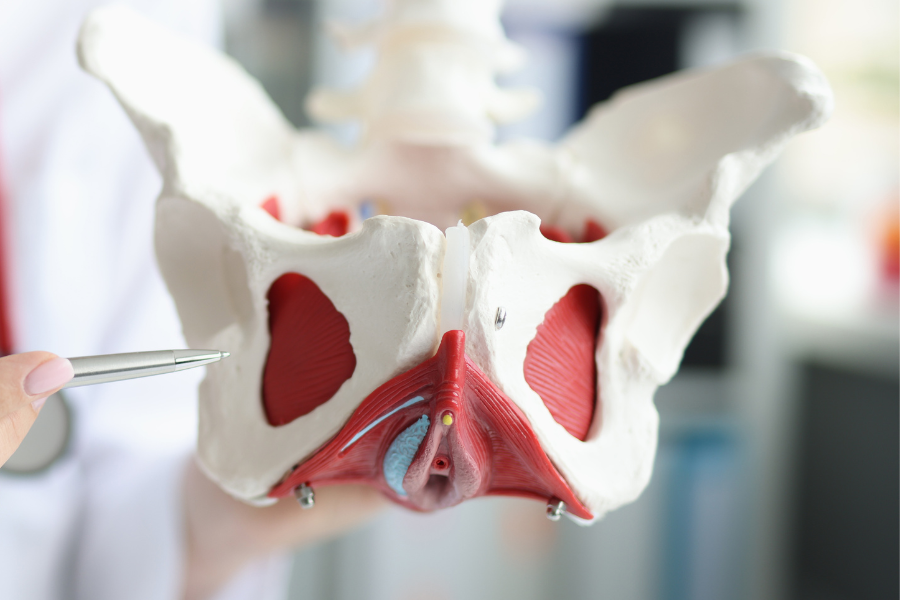How The Pelvic Floor Muscles Influence Birth
How The Pelvic Floor Muscles Influence Birth
We all know the essential functions of the pelvic floor muscles include support, sphincteric, and stabilizing. But are you familiar with how the pelvic floor muscles influence birth? In my years of working with pregnant clients, I have seen the importance of the proper tone in the pelvic floor muscles for delivery, as these muscles allow the pelvic bones to expand for the baby’s passage. We know the bones need to move as the baby comes through, and the pelvic floor muscles allow this movement. That is why I call them the stoplight for baby and birth. Unfortunately, very few pregnant people know the level of tone they carry in their pelvic floor muscles. As birth professionals, we must assess the pelvic floor before labor to ensure a supple, flexible muscular tone for a smoother birth.
Pelvic Floor Muscles are the Stoplight for Baby
The analogy of the stoplight is very appropriate when you look at the level of tone in the muscles. Ideally, we need a green light tone for birth, where the muscles are like a trampoline; they can give and expand but bounce back. A green light tone allows the baby to come through with as minimal resistance as possible. The yellow light tone is in the middle and allows some give to the muscular expansion to allow some movement of the bones but will offer more resistance to the baby as it’s moving through the pelvis. The red light tone is the exact opposite of the green light tone. This level tone is hard as a brick with no give to the musculature at all. These muscles don’t allow any movement of the pelvic bones to expand, and the baby will not be able to pass through unless an epidural is given to bypass this tone.
The increased tone of the muscles almost repels the baby’s head away from the side with the greater tone. When the left side pelvic floor muscles are tighter, the baby’s head is off to the right in the lower abdomen. The baby’s head avoids moving into the pelvis if both sides are tight.
If only all birth professionals understood the importance of normal pelvic floor muscular tone for birth and addressed it before delivery, our c-section rates may drop. Babies could find a more straightforward passage, and labor wouldn’t be so long. When I’ve trained midwives to release the pelvic floor muscles, some have reported that when a labor stalls, they release the pelvic floor muscles, and baby’s come right on out. This makes sense as a relaxed muscle allows the bones to open up more.
So how do we help the tone in the pelvic floor muscles?
Epidurals do help sometimes but carry a lot of other issues. Pelvic floor muscle assessment and treatment should be standard care for all pregnant people before birth. As pelvic health physical and occupational therapists, it’s our job to make sure we do so and work to help release any increased tone. I teach how to do so in the Holistic Treatment of the Pregnant Body course. Doulas should encourage all of their clients to be seen by a Birth Healing Specialist or Pelvic Floor therapist before labor. If they can’t get in, instruct your clients to assess their pelvic floor with their fingers and look for a trampoline-like tone in the muscles. Midwives and OBs could be trained to release the muscles in a pre-labor appointment or even during labor, as the pelvic floor muscle tension should be assessed along with cervical dilation. Together, we can help decrease tone in these muscles to help moms and babies have smoother births.

